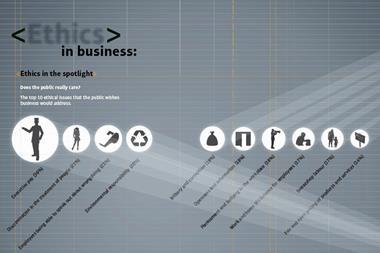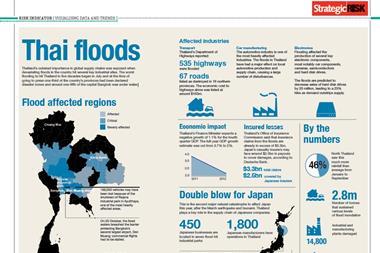Earthquakes are not actually growing more frequent, yet the cost of natural catastrophes hit a new high in 2011 as populations concentrate in cities, as this graphic shows
Open publication - Free publishing - More nat cats
Last year was the costliest year ever for catastrophes. At about $380bn (€290bn), global economic losses were nearly two-thirds higher than the previous record in 2005 of $220bn, according to Munich Re. The earthquakes in Japan and New Zealand caused almost two-thirds of these losses, as the chart opposite shows.
Five of the 10 most costly natural disasters were in the past four years (see opposite). But, contrary to popular perception, at around 820 natural catastrophe events in 2011, the number of events was in line with the average of the last 10 years.
Nine out of 10 of the natural catastrophes were weather-related (fl oods, storms, hurricanes and so on), whereas nearly two-thirds of the economic losses stemmed from geophysical events (like earthquakes). Normally geophysical events account for under 10% of economic losses and usually it is the weather-related natural catastrophes that are the dominant loss drivers.
City life
Almost 30,000 people lost their lives last year as a result of natural catastrophes (the map opposite shows the deadliest disasters of the past 30 years). Perhaps one of the reasons for the high costs - both in terms of money and human life - is that a growing share of the world’s population and economic activity is being concentrated in disaster-prone places: on tropical coasts and river deltas, near forests and along earthquake fault lines.
Whereas in 1950 only about 30% of the world’s population lived in cities, the United Nations currently puts that fi gure at 50%. It is expected to rise to more than 60% by 2030. Natural disasters are more destructive when they strike large cities.
And most of the world’s mega-cities (that is, urban areas with eight million or more people) are built in areas where earthquakes, fl oods, landslides and other natural disasters are most likely to happen. Currently, 280 million people live in at least 25 megacities across the world, three-quarters of which are located in the developing world.
Where on earth
The distribution of regional losses in 2011 was also unusual. Around 70% of economic losses in 2011 occurred in Asia. The most destructive loss event of the year was the earthquake of 11 March in Tohoku, Japan, when a seaquake with a magnitude of 9.0 occurred 130km east of the port of Sendai and 370km north of Tokyo.
Before the tsunami in Japan, there had been an earthquake of 6.3 magnitude in Christchurch, New Zealand, on 22 February. The notable aspect of this event was that an earthquake of 7.1 magnitude had hit Christchurch just six months earlier.
Head of Munich Re’s geo risks unit, Peter Hoppe, says: “Even if it seems hard to believe given recent events, the probability of earthquakes has not increased. But these severe earthquakes are timely reminders that the decisions on where to build towns need careful and serious consideration of these risks - especially where certain buildings are concerned, above all nuclear power plants.”




















No comments yet